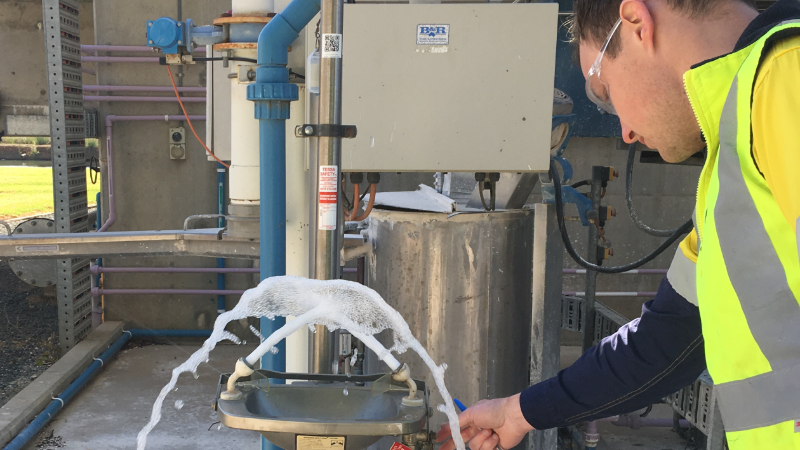We operate 26 Wastewater Management Facilities (WMF), the majority of which use lagoon treatment followed by land-based reuse. Lagoon treatment is used as it is a cost-effective method for the type of wastewater reaching our facilities.
There are three stages of wastewater treatment. These are necessary due to the trade waste produced by large food processing industries in our region.
View our Fact Sheet (PDF: 80kb) to learn about how wastewater is transported.
View our Fact Sheet (PDF: 90kb) to learn about how wastewater is treated.

Safety is a paramount expectation at all of our WMFs.
Primary Treatment: Involves screening of wastewater to remove solids. Some sites require lime dosing, which is added to the wastewater to ensure that the acidity level (pH) of the incoming wastewater is greater than 7 for maximum efficiency.
Secondary Treatment: This is a biological process that relies on the raw wastewater coming into direct contact with micro-organisms living in the lagoons. The organic material in wastewater is a food source for the bacteria which break it down into gases and water. After water has undergone secondary treatment it becomes recycled water, which we use for agricultural, horticultural and recreational situations. We have farms at many of our WMFs and also partner with farmers and golf courses to provide recycled water to irrigate woodlots, pasture, crops and grasses.
Tertiary Treatment: Where it is not possible to use recycled water for irrigation, due to lack of farm land or high rainfall, some water needs to be treated further so it can be discharged into a local waterway. A permit from the Environment Protection Agency (EPA) is required to discharge recycled water. We use physical and chemical processes for tertiary treatment, combining flocculation, sedimentation and filtration. This removes suspended solids, algae and phosphorus before returning the recycled water to the environment.
For more information download our What's behind the Tap - Wastewater Treatment Brochure